Navigation indoors — first steps with indoo.rs NavigationSDK

Suppose you are organizing a conference, exhibition or responsible for the infrastructure of the shopping center or the airport. In any case, you are dealing with a large flow of visitors. One of the problems you will encounter is the ' indoor navigation, or rather lack of it. Solving this problem, you can improve the efficiency and accessibility of its activities, and to improve the quality of services provided.
This problem is not new and attempts to solve it have been made repeatedly by various market participants. In this article I will tell you about one such effort — technology proposed by the Austrian startup indoo.rs.
This startup has been around for several years, and the efforts enclosed to the product in recent times is aimed primarily at reducing the cost and the radical simplification of application technologies. All who are interested in the implementation process from decision to ready mobile app with navigation features, welcome to under the cat.
it is Worth noting that a wide range of products not just limited to navigation. In addition it also developed a system of interaction with customers (proximity marketing), the tracking of property or goods (asset tracking) and employees (worker tracking). We now consider NavigationSDK tool makes it easy to use the technology of indoor positioning in their mobile applications.
the process of preparation consists of the following steps:
the
-
the
- register a new account and application; the
- entering information and creating a map of the premises; the
- removal of the measurement of the signal strength in the premises; the
- processing of the obtained measurements; the
- create a mobile app and SDK integration.
so the first step when working to NavigationSDK is to create your account. Currently available in several tariff plans, among them Testing free plan with a limit of 1 month for all who would like to get a General impression about NavigationSDK. We will try in the case.

so, we registered our account — what's next? The next step is to register the application. After that it will be available the key for the API.
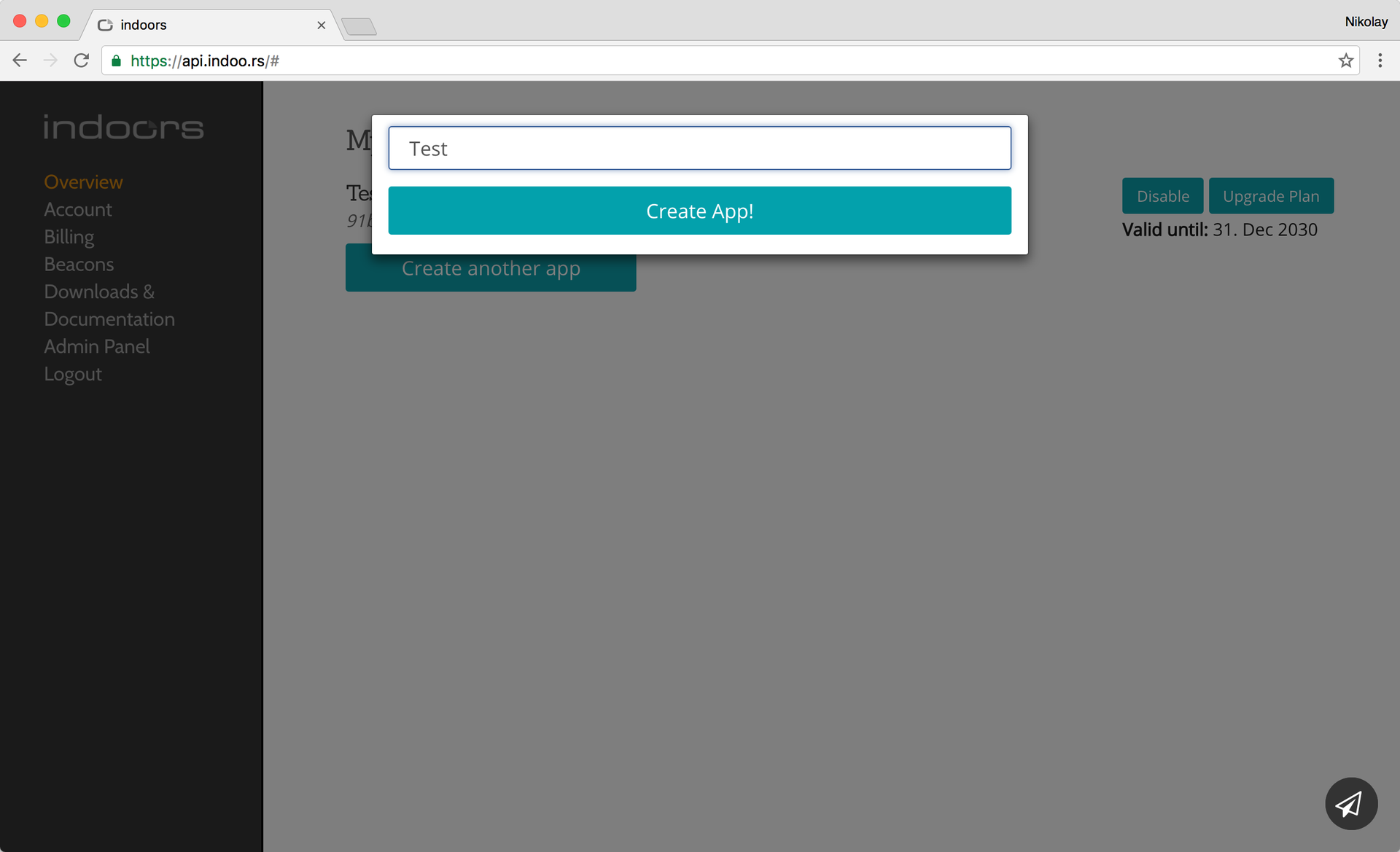


This key is also needed for the application, MeasurementTool, which can be downloaded from Downloads section. MeasurementTool we need to create a map of the premises. For this we need images with floor plans (one of those areas that we plan to use for navigation). Use high-quality images in this step, as they will appear in your future mobile application.
First enter your registration information and the application key in the settings MeasurementTool.
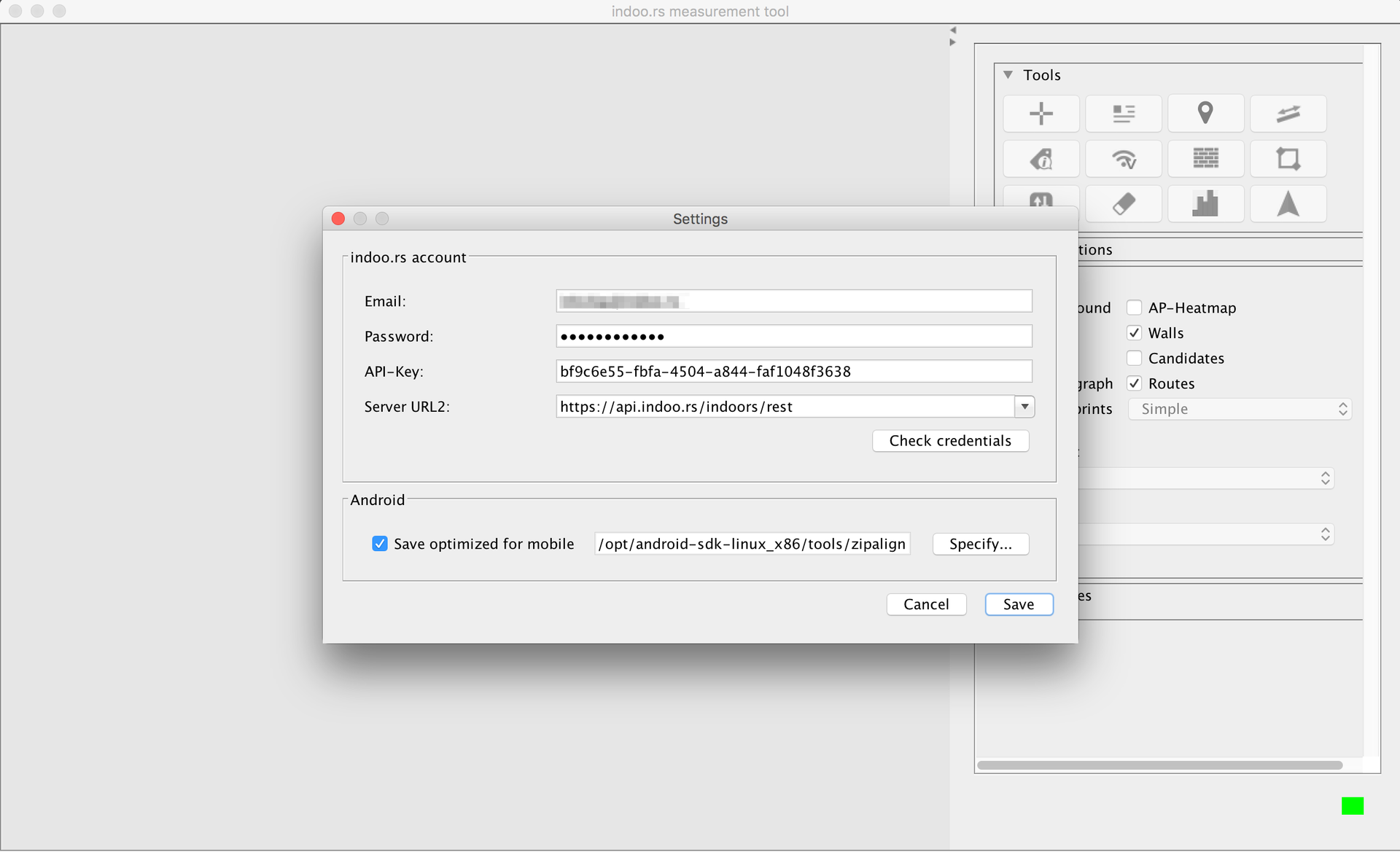
When you create a new card we will need the following information:
the
-
the
- the name of the structure description; the
- coordinates of the structure on the map; the
- rotation angle; the
- the name, level and description for each floor.
a Few nuances related to the creation of the map:
the
-
the
- the coordinates are relative to upper left corner of the floor plan; the
- the angle of rotation is relative to the top border of the image beginning in the upper left corner.
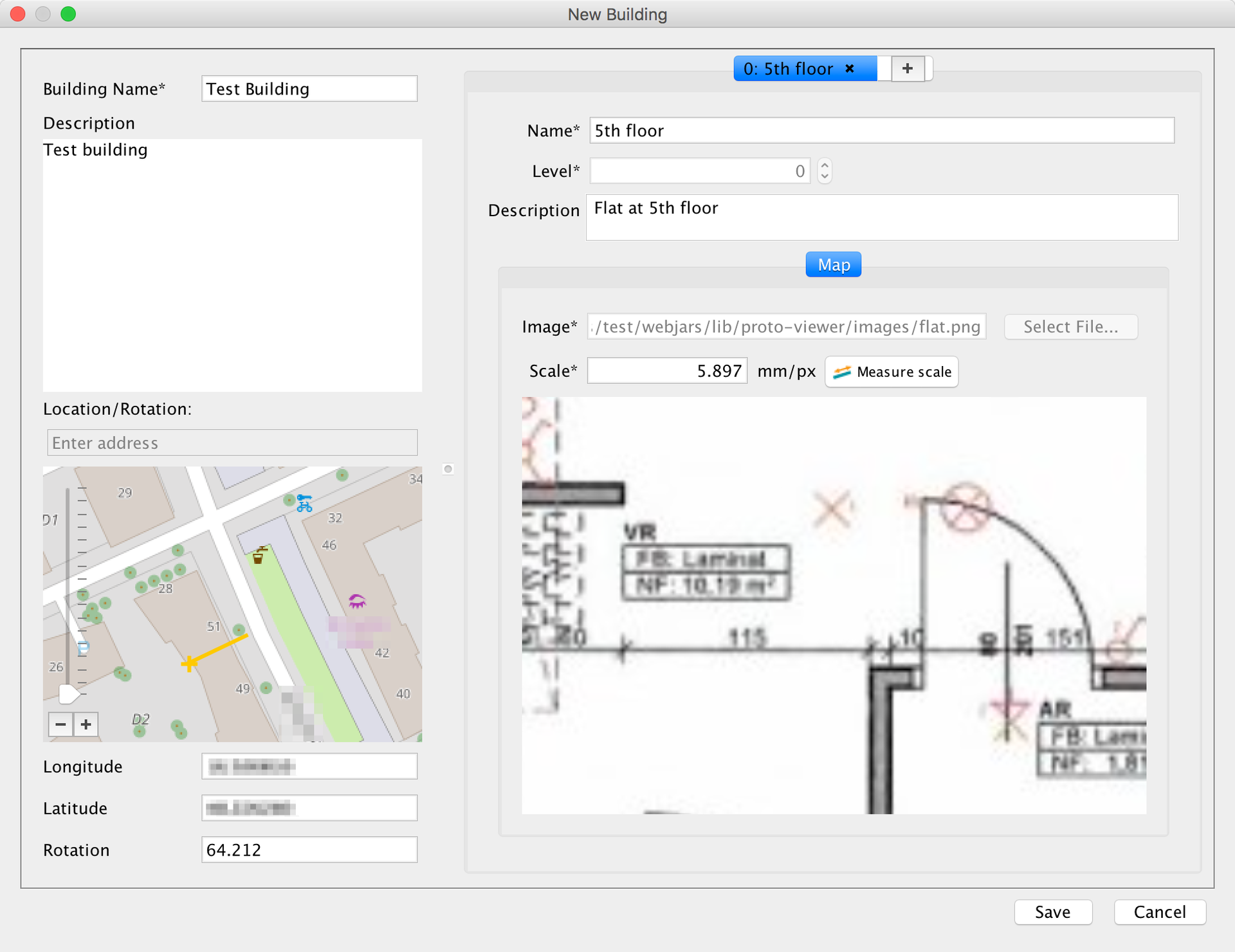
so we asked all the necessary settings and created a prototype of our future cards. The next step is the task necessary to navigate map elements such as: walls, transitions between levels, zones, routes, etc.
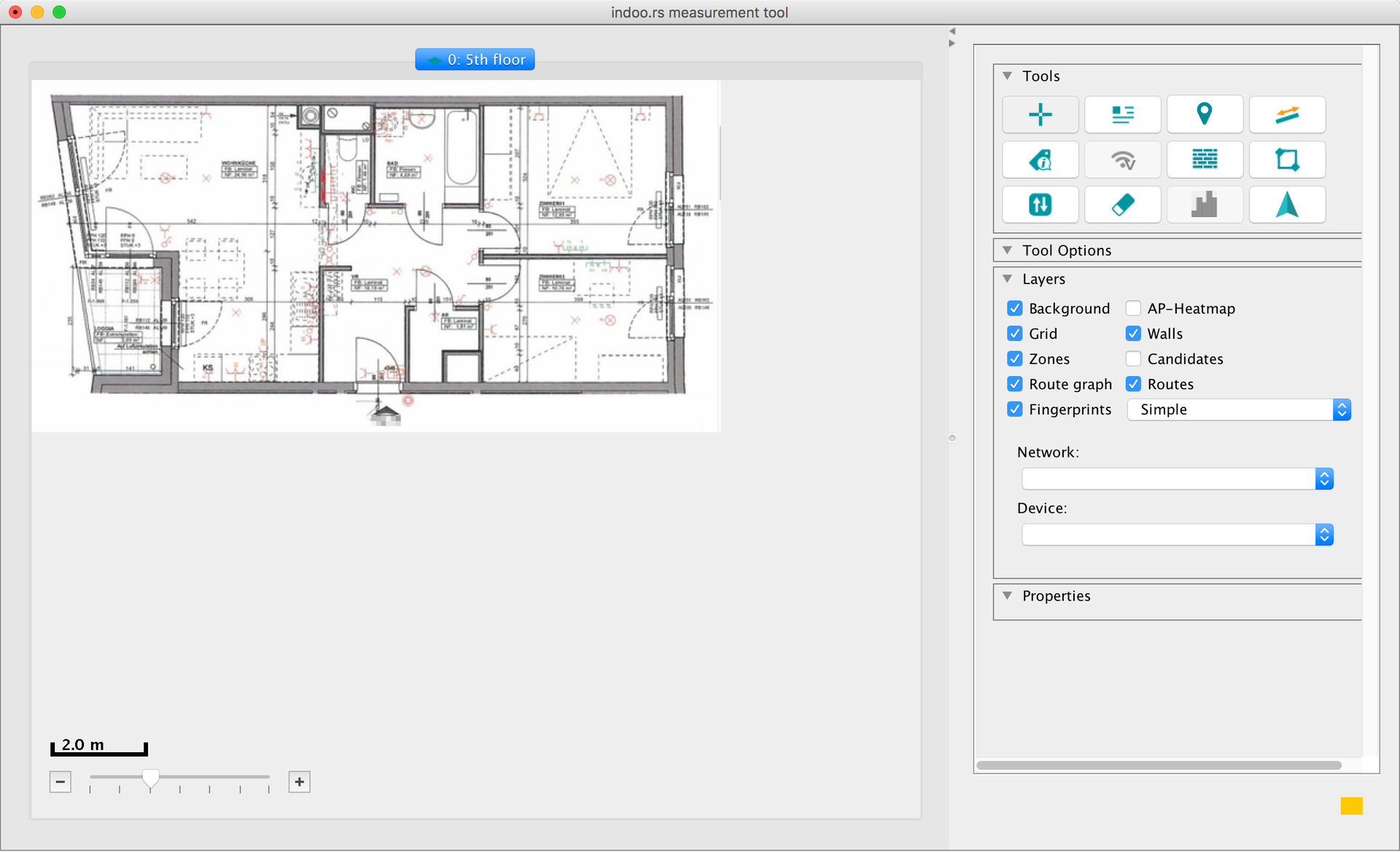
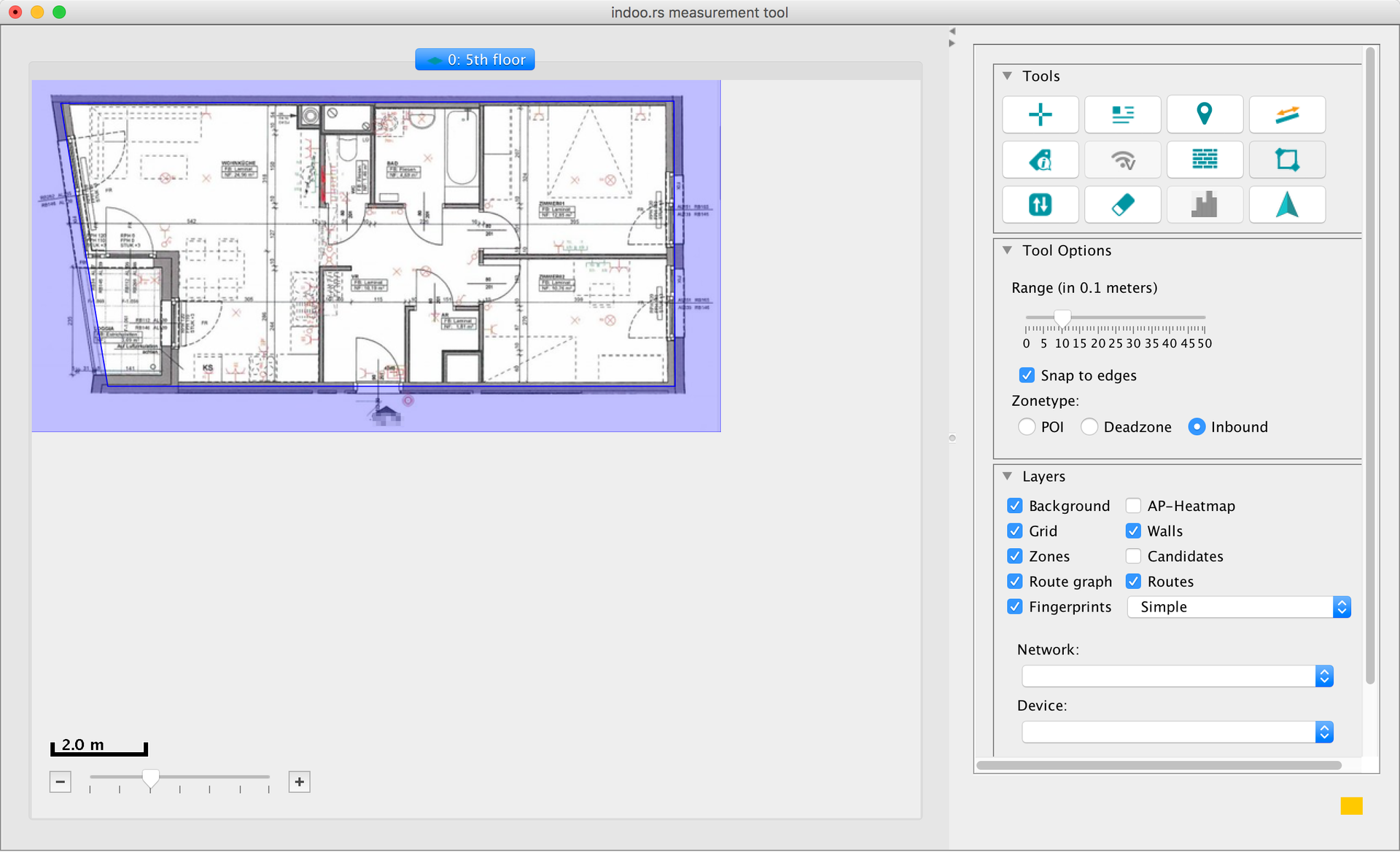


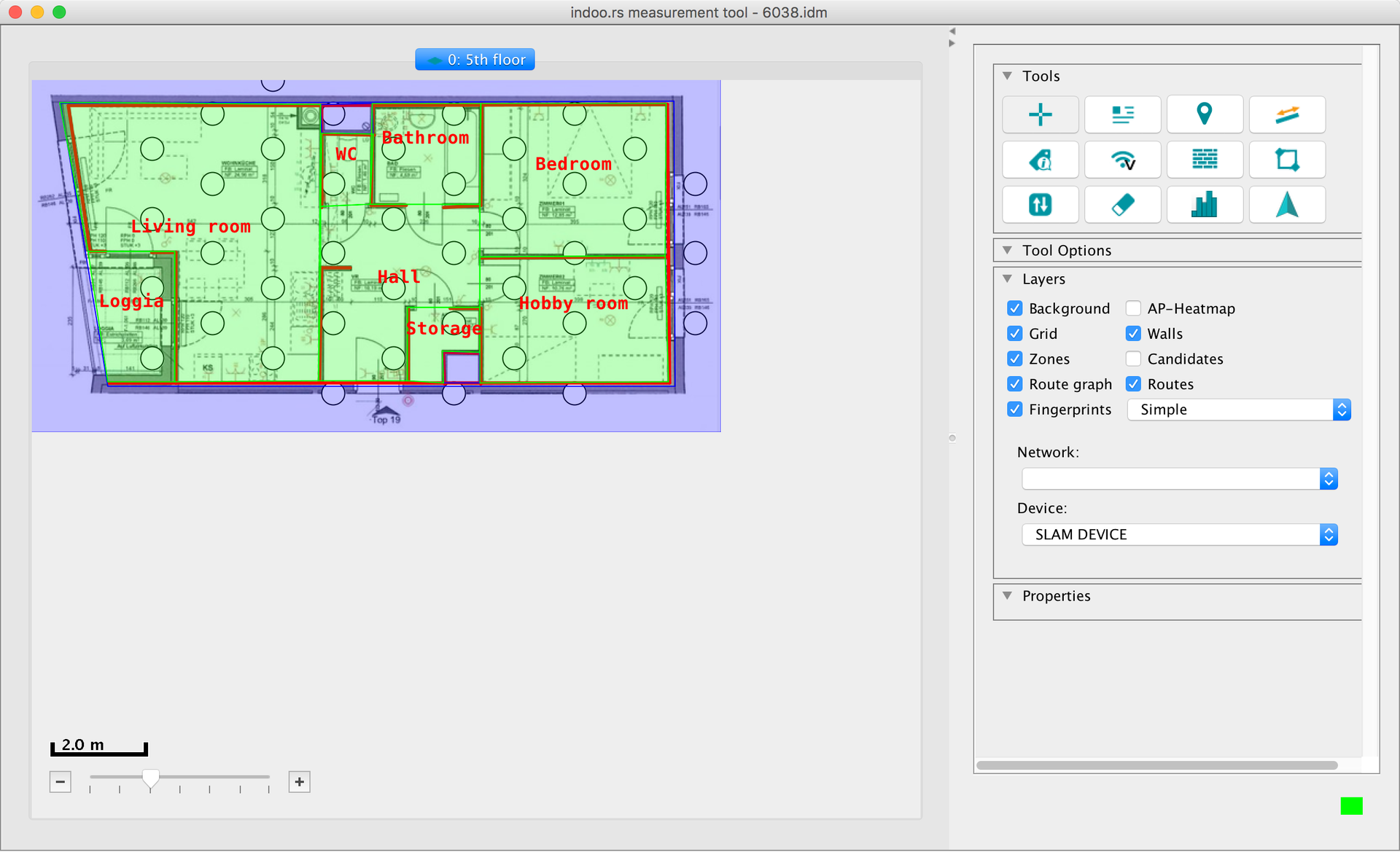
In earlier versions of the application we had to specify the location of the devices-transmitters (WiFi access points and/or BLE beacons) and place them physically in accordance with their location on the map — a lot of hard work manual. Currently, this is no longer necessary: you just evenly distribute the lights throughout the room, and everything else happens automatically, thanks to new algorithms combined under the name Indoors SLAM used to build maps.
After you set all necessary parameters, we are ready to save our changes to the server, to do this, select in the File menu, click Save to cloud.
the Next step will be the physical location of BLE beacons in the premises. To estimate a sufficient number of beacons you can use calculator.
you Can use any beacons are compatible with iBeacon Protocol or an existing WiFi infrastructure access points. Precision in the latter case it turns out generally below, but for some applications it may be sufficient.
After placing the beacons, proceed to the next step — the removal of measurements. This task helps the app indoo.rs MobileToolkit — it is also available in Downloads section. The only limitation is that the app is only available for the Android platform (due to the limitations on Apple devices to work with Bluetooth stack).
now, run the application, enter the registration data and open the previously created map of the premises. To record measurements there are two ways:
the
-
the
- to mark your current position, going on the card; the
- pre-marking the route, to celebrate reaching the next point.
Subjective, the second method is a little easier.
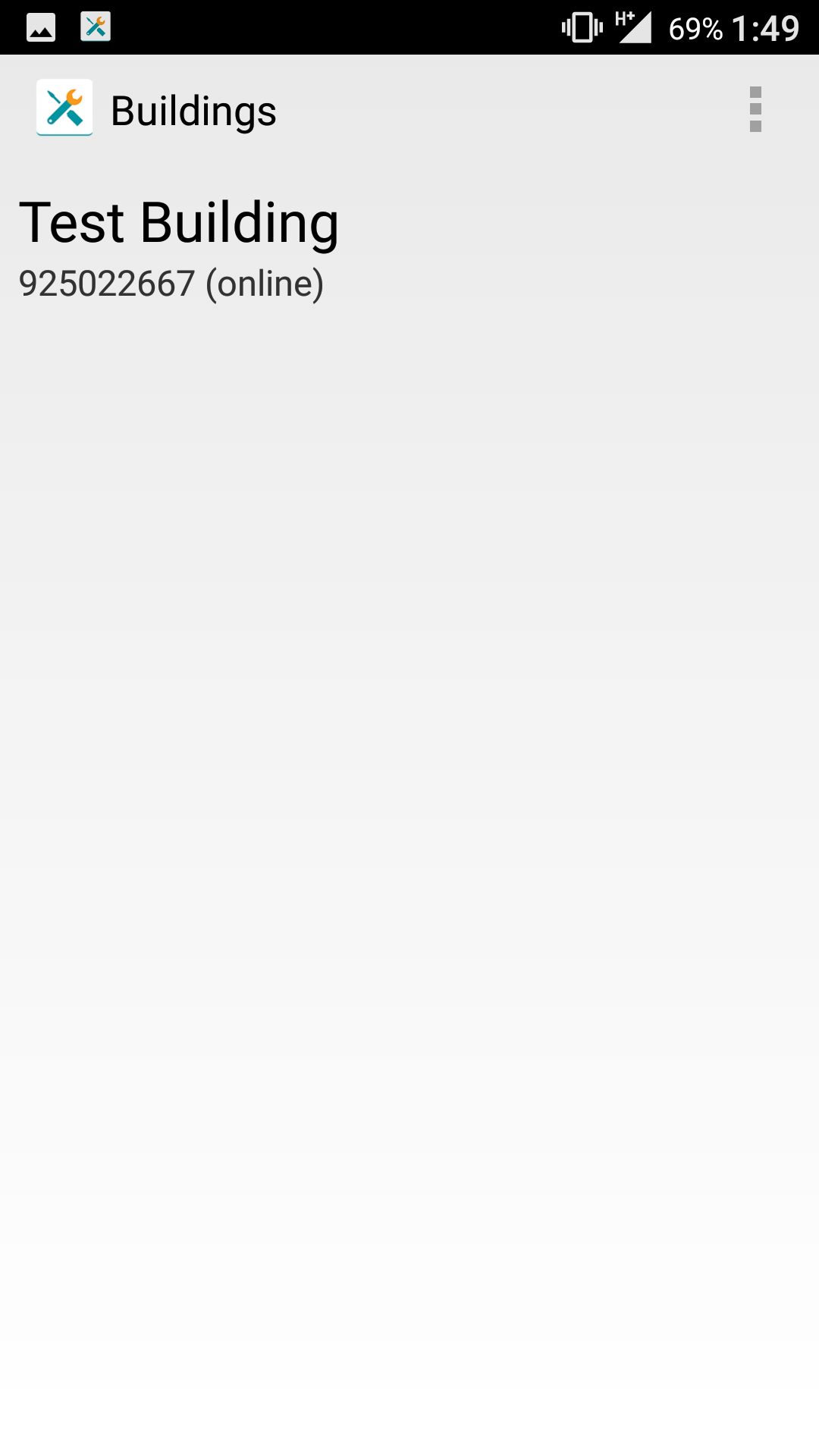
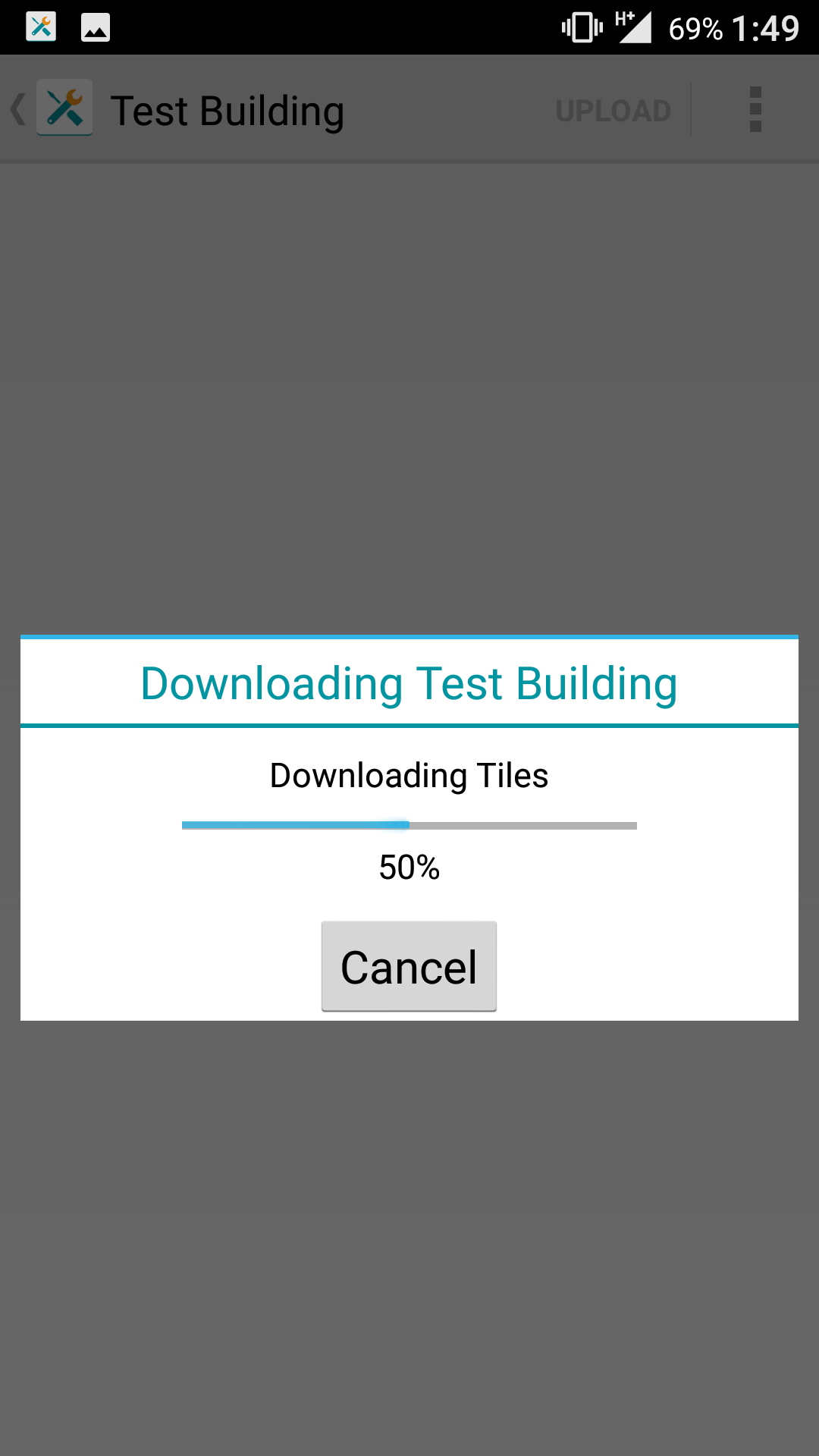
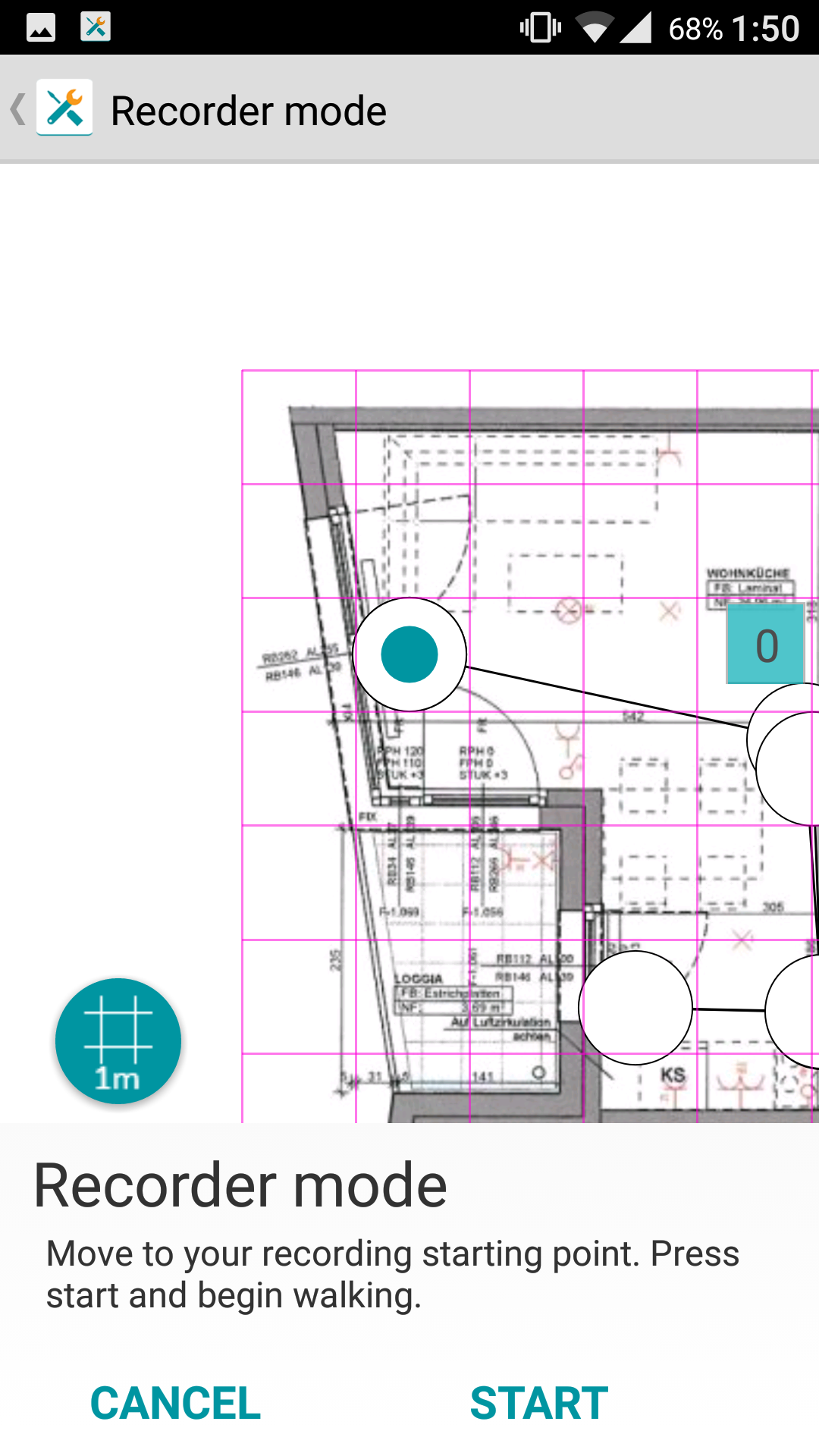
Basic advice on measurements:
the
-
the
- duration of measurement must be within two to ten minutes; the
- sections of the trail must be straight; the
- it is not necessary to swing the device, because in addition to measuring the radio signal are also lifted and readings from the built-in accelerometer; the
- total dimensions must cover the entire area of the premises; the
- it is desirable that the measurement overlap each other in area; the
- and, of course, to start the measurement, make sure that Bluetooth is activated on your device.
Now you need to download measurements to the server. Use the user name and review to distinguish measurement (e.g., floor number, side of the room, etc.).
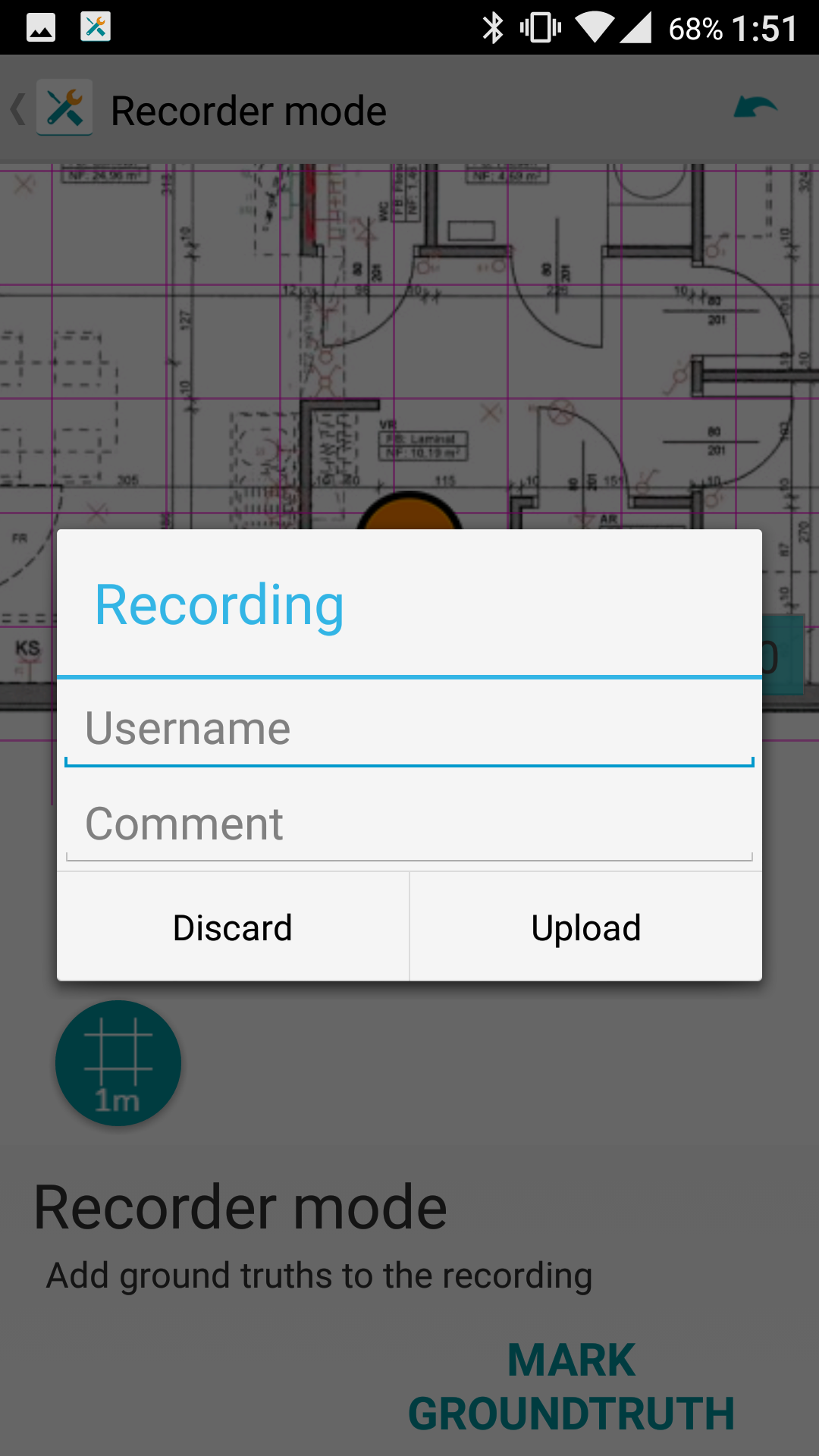
the Next step at the moment, partly automated and performed on request in technical support. Soon will be available new tool (internal name SLAM DIY) that will allow you to finalize your own cards and output to a file in the idm format, which can then be imported into MMT. After import map is available to users of the mobile application.
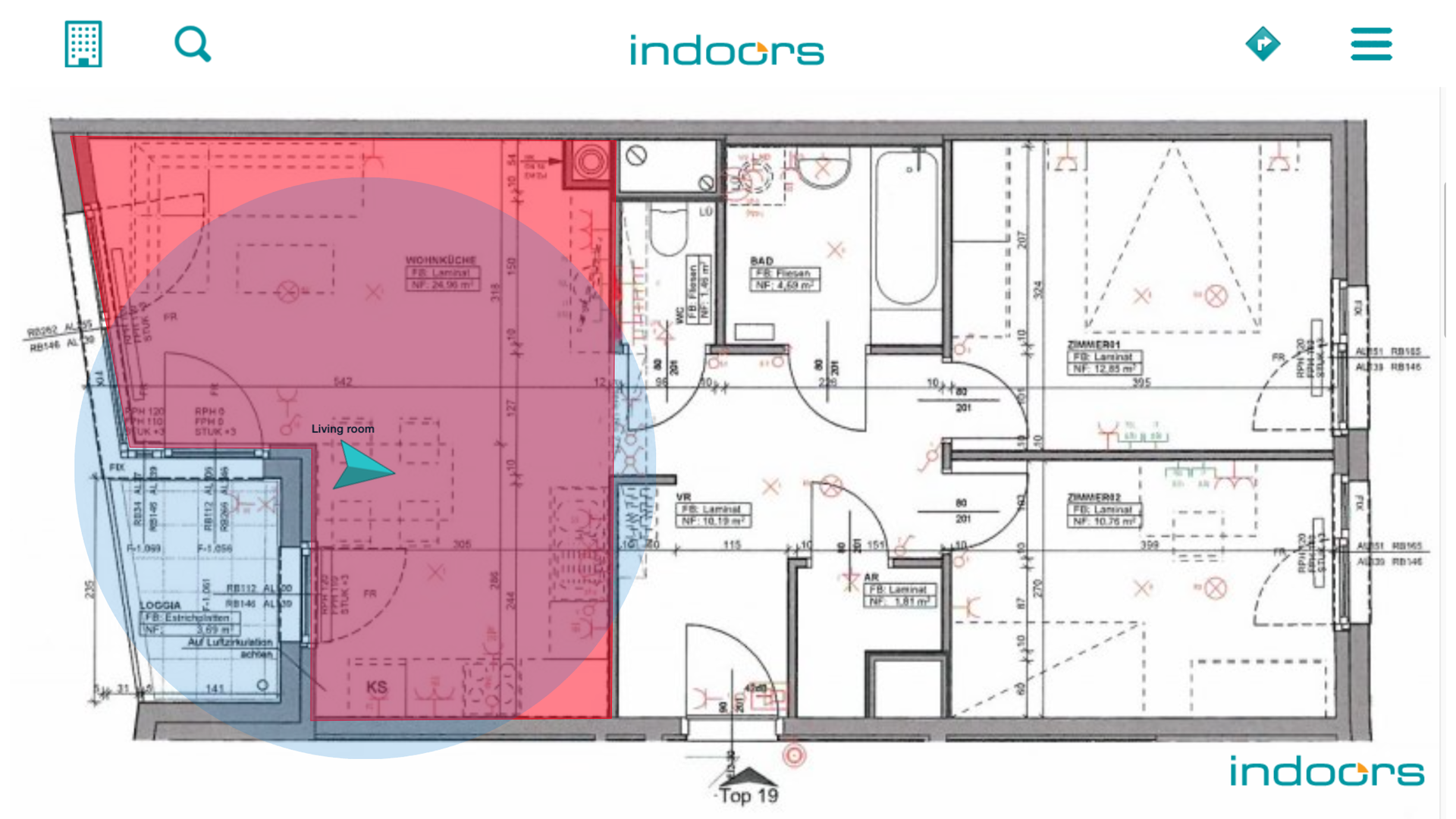
To this point, we have everything you need to implement your own navigation in space. Links to examples of apps for iOS and Android are also in downloads.
special attention deserves the recently added a plugin for Cordova and sample application. This made it possible to use the SDK in a hybrid application.
If this topic will interest readers, I can tell you more about mobile application development NavigationSDK, other company's products and future plans.
Комментарии
Отправить комментарий